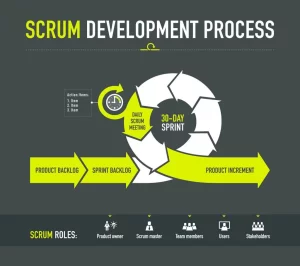It is often quite a simple question, but as the answer unfolds it becomes evident that it is a lot more complicated. What are the hidden costs, what are the factors to consider and who should you hire? This article is here to clarify some of these questions and identify key factors to consider when starting a new project.
The first thing that needs to be considered is how this application will be made and what software to consider using.
CUSTOM DEVELOPMENT
OPEN SOURCE
Open Source solutions are very commonly used software. Software such as WordPress is easily accessible and users can download, install and use software without having to pay for it. However, when it comes to customizability, things can become technical very quickly, it is important to consider a developer that understands the software of your choice in order to properly use every feature available of that software.
Custom development, also known as custom software development, refers to the process of creating software applications or solutions tailored to meet specific requirements of a business, organization, or individual. In contrast to off-the-shelf, open source software, which is ready-made and designed to address general needs, custom development involves designing, coding, testing, and deploying a unique solution that precisely fits the user’s particular needs and objectives.
Considering specific concepts and ideas when it comes to custom development as asking for general solutions can lead to higher costs.
COST MODELING
Here we break down the pricing model into 4 major factors, that being domain knowledge, time to value, resource maturity and expertise scarcity.
DOMAIN KNOWLEDGE
There a many people in the industry with varying degrees of knowledge on any given subject, it is important to be aware of how that might affect the progress of your project, as someone who would be considered a junior in their skill level, who does have the basic understanding to work within the software that you have, it would take them longer to work on that application, thus costing more long term.
Whereas someone with more expertise and specific knowledge in said application might cost more initially but is able to finish the project quicker and possibly better.
TIME TO VALUE
Value and the amount of hours associated with it. With enough available time, it might be advantageous to consider having junior developers working on a project, in being able to hire more than you would a senior developer and then being able to upskill those junior developers over the period of the project.
That, however, is considering that time is not of the essence. If time is limited then the better option would be to consider hiring senior developers, albeit less, but in being better skilled, it could be more effective to have someone on hand who has a better idea of what they are doing, especially if emergencies arise.
EXPERTISE SCARCITY
Some software or technologies are not as widely known or compatible as others, leading to the developers who do specialize in it to have higher rates for that software.
Though a lesser know software might sometimes be just the thing you need for your application, it is always good to be aware of and understand of the different softwares used for different applications in order to find one that not only suits your application best, but will also make finding the appropriate developers who can work on that software, a lot easier and also more cost effective.
COMMON APPLICATION TYPES
MARKETING
These applications are often focused on a social aspect, as in social media or to promote a product, generally as the name suggests, they are used for the purpose of marketing.
SOLUTION DRIVEN
Applications that are solutions driving are often used for the purpose of solving a problem or fulfilling a need, this usually include the business aspect of a project, the actual selling of products.
NATIVE DEVELOPMENT
Native development refers to creating applications specifically designed to run on a particular platform or device. The term “native” implies that the software is developed using the programming languages and tools native to the target platform, taking full advantage of its features and capabilities. It is specialized, which means that there might be a lesser availability of developers. With that scarcity in mind, costs are often higher.
HYBRID DEVELOPMENT
A counter to native development is hybrid development. Designed to create applications that combine elements of both native and web development. Hybrid apps are designed to work across multiple platforms and devices, utilizing web technologies (such as HTML, CSS, and JavaScript) for the user interface, while also having a native shell that enables them to access device-specific features.
SPECIALIZED DEVELOPMENT
These technologies include applications such as blockchain, machine learning, virtual reality or development on the Meta or Web3 environment
SOFTWARE DESIGN METHODOLOGY
There are many ways in which a team of people can operate and how that team can be managed. Some are simple for example Waterfall and others might be more complicated like Lean, each is designed with a certain objective in mind and each team might prefer a different methodology. There is no one size fits all.
WATERFALL
The Waterfall model is a linear and sequential approach to software development that follows a structured and predefined set of phases.
In the Waterfall model, each phase must be completed before moving on to the next, and changes to earlier stages are discouraged once they are completed. This method is well-suited for projects with well-defined and stable requirements but may be less flexible in the face of changing needs. This, however, also means that it would not be appropriate for more complex projects that require back-and-forth in its development.
AGILE
Agile promotes flexibility, customer satisfaction, and responsiveness to change throughout the development process. Using the feedback from the users using the product and building upon that feedback.
PROTOTYPE
The Prototype model emphasizes early user involvement and iterative development to ensure the final product aligns closely with user expectations. This means creating a prototype to mimic as closely as possible what the end product will be and then further developing and updating the product as flaws are found.
RAPID APPLICATION DEVELOPMENT
RAD emphasizes speed, flexibility, and user feedback, aiming to deliver functional software rapidly through iterative development cycles. There is heavier focus on the software aspect rather than the look and feel, in order to provide a product that best serves a function.
EXTREME PROGRAMMING
Extreme Programming (XP) is an agile software development methodology that emphasizes collaboration, adaptability, and high code quality. In XP, developers work in pairs, engaging in real-time collaboration at a single workstation. Continuous integration ensures that code changes are regularly integrated and tested, enabling early detection and resolution of issues. Test-Driven Development (TDD) is a core practice, requiring developers to write tests before the actual code, ensuring functionality and guiding the development process. Customer involvement is prioritized, with regular feedback sessions to accommodate changing requirements. Small, frequent releases of functional software contribute to a dynamic and responsive development process in XP, promoting customer satisfaction and rapid adaptation to evolving needs.
LEAN
The Lean method in software development draws inspiration from lean manufacturing principles, aiming to optimize efficiency and eliminate waste in the development process. It emphasizes delivering value to the customer by focusing on what matters most. Lean encourages continuous improvement, waste reduction, and the elimination of unnecessary processes. Key principles include minimizing work in progress, empowering teams, and responding swiftly to changing requirements. Lean promotes a holistic approach, aligning development efforts with customer needs and business objectives, while fostering a culture of collaboration and adaptability.
SCRUM
In Scrum, a development project is divided into small, time-boxed iterations called sprints, typically lasting two to four weeks. Each sprint begins with a planning session where the team selects a set of features to implement. Daily stand-up meetings facilitate communication and coordination among team members. At the end of each sprint, a potentially shippable product increment is delivered, allowing for continuous feedback and adaptation. Scrum includes defined roles such as Scrum Master, Product Owner, and Development Team, each with specific responsibilities. The method promotes transparency, inspection, and adaptation, enabling teams to respond quickly to changing requirements and deliver valuable software incrementally.
UX\UI
User Experience (UX) and User Interface (UI) are integral aspects of software development, working together to create seamless and satisfying interactions for users. UX encompasses the overall journey a user has with a digital product, focusing on their feelings, behaviors, and satisfaction throughout the experience. UX designers conduct research, create personas, and design interfaces that meet user needs and expectations, ensuring a positive and meaningful encounter.
On the other hand, UI specifically deals with the visual elements and design of the software, including buttons, menus, and other interactive components. UI designers focus on creating aesthetically pleasing and user-friendly interfaces that align with the overall UX goals. Together, UX and UI form a collaborative effort to deliver software that not only looks appealing but also provides a smooth and intuitive experience, ultimately enhancing user satisfaction and engagement.
It is important to have developers who are well-versed in these areas in order to know how to incorporate certain features into the designs. A lot of money can end up being lost over poor user experience as that will determine whether or not they end up reusing the your application instead of moving on to another one
DIGITAL/WEB DESIGN
This is the front end of your application, now having established what we want our site to look like, now comes the actual coding aspect of the project. Software such as React, Angular, Javascript, all these different software is constantly and continuously being updated and there are a variety of different ones to suit different applications to create interfaces.
APPLICATION DEVELOPMENT
Where the front end of your application is the part that your users see and interact with, the backend is just as important from the developers side, This is where the big stuff happens. This is where the business logic lies and often where databases are linked. This is where you will have to use your core programming language, PHP, Python, etc. It’s also where you will be working with your API, Application Programming Interface. This is what give access to your databases
DEVELOPER OPERATIONS
DevOps is where a bunch of considerations are being made, How is the application being deployed? How does it continue getting deployed and tested? How will its servers be set up, how will its scaling work. In this aspect a lot of maintenance is being done and constant adjustment. All of these factors need to be considered by your developers and how that affects related costs.
SECURITY
It is important to consistently test how secure your application is during the development of it, especially when it comes to open source applications such as word press. Bugs are openly being reported to the public making it easy for anyone to seek out those same issues in other applications in order to exploit them. This is also good reason to take into account when considering open source applications.
MARKETING
Marketing is a comprehensive business process that involves the creation, communication, delivery, and exchange of offerings that have value for customers, clients, partners, and society at large. It encompasses a range of activities aimed at understanding customer needs, developing products or services to meet those needs, determining the appropriate pricing, promoting and advertising the offerings, and ensuring their distribution to the target audience
Understanding what marketing is and how to apply that to the application that your are creating, creating content that centers around it can be a great tool in generating the longevity that application needs to continue existing and evolving.
It is the last but just as important factor to consider when is come to considering the many many costs and requirements that goes into the creation and development of these variabilities can come together in different ways and varying degrees depending on the needs and requirements of the application and those creating it.














